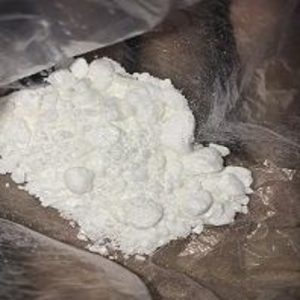The Rise of Synthetic Opioids
In recent years, there has been a significant increase in the use and abuse of synthetic opioids. These man-made drugs are designed to mimic the effects of natural opioids, such as morphine and codeine, but are often much more potent and dangerous. In this article, we will explore the rise of synthetic opioids, their impact on pain management, and some examples of these drugs.
What are Synthetic Opioids?
by HI! ESTUDIO (https://unsplash.com/@hiestudio)
Synthetic opioids, also known as designer opioids or synthetic drugs, are created in a laboratory using chemical compounds. They are designed to mimic the effects of natural opioids, but are often much stronger and more addictive. These drugs are often sold illegally and can be found in various forms, including pills, powders, and liquids.
Impact on Pain Management
Synthetic opioids were initially created as a way to provide pain relief for patients who were not responding well to traditional opioid medications. However, due to their potency and addictive nature, they have become a major concern in the field of pain management. These drugs can provide quick and powerful pain relief, but they also come with a high risk of addiction and overdose.
Examples of Synthetic Opioids
There are several different types of synthetic opioids, each with their own unique chemical makeup and effects. Some of the most commonly used and abused synthetic opioids include:
- Fentanyl: This is one of the most potent synthetic opioids, with a potency up to 100 times stronger than morphine. It is often used in medical settings for severe pain, but has also been found in illegal drugs such as heroin and cocaine.
- Carfentanil: This is an extremely potent synthetic opioid, with a potency up to 10,000 times stronger than morphine. It is primarily used as a tranquilizer for large animals, but has also been found in illegal drugs and has been linked to numerous overdose deaths.
- U-47700: This synthetic opioid is often referred to as “pink” or “U4” and is similar in potency to morphine. It is often sold as a powder or in pill form and has been linked to numerous overdose deaths.
Pain Relief Alternatives
With the rise of synthetic opioids, many people are looking for alternative methods of pain relief. Some options include:
- Physical therapy: This can help improve mobility and reduce pain without the use of medication.
- Acupuncture: This ancient practice has been shown to provide pain relief for a variety of conditions.
- CBD: Cannabidiol, or CBD, is a compound found in the cannabis plant that has been shown to have pain-relieving properties.
- Mindfulness techniques: Practices such as meditation and deep breathing can help manage pain and reduce stress.
The Need for Regulation
by Myriam Zilles (https://unsplash.com/@myriamzilles)
The rise of synthetic opioids has highlighted the need for stricter regulation and control of these drugs. Many of these substances are being produced and sold illegally, making it difficult for authorities to track and control their distribution. It is important for governments to implement stricter regulations and penalties for the production and sale of synthetic opioids in order to protect public health and safety.
In conclusion, the rise of synthetic opioids has had a significant impact on pain management and public health. It is important for individuals to be aware of the dangers of these drugs and to seek alternative methods of pain relief. Governments also need to take action to regulate and control the production and distribution of synthetic opioids in order to prevent further harm to individuals and communities.














